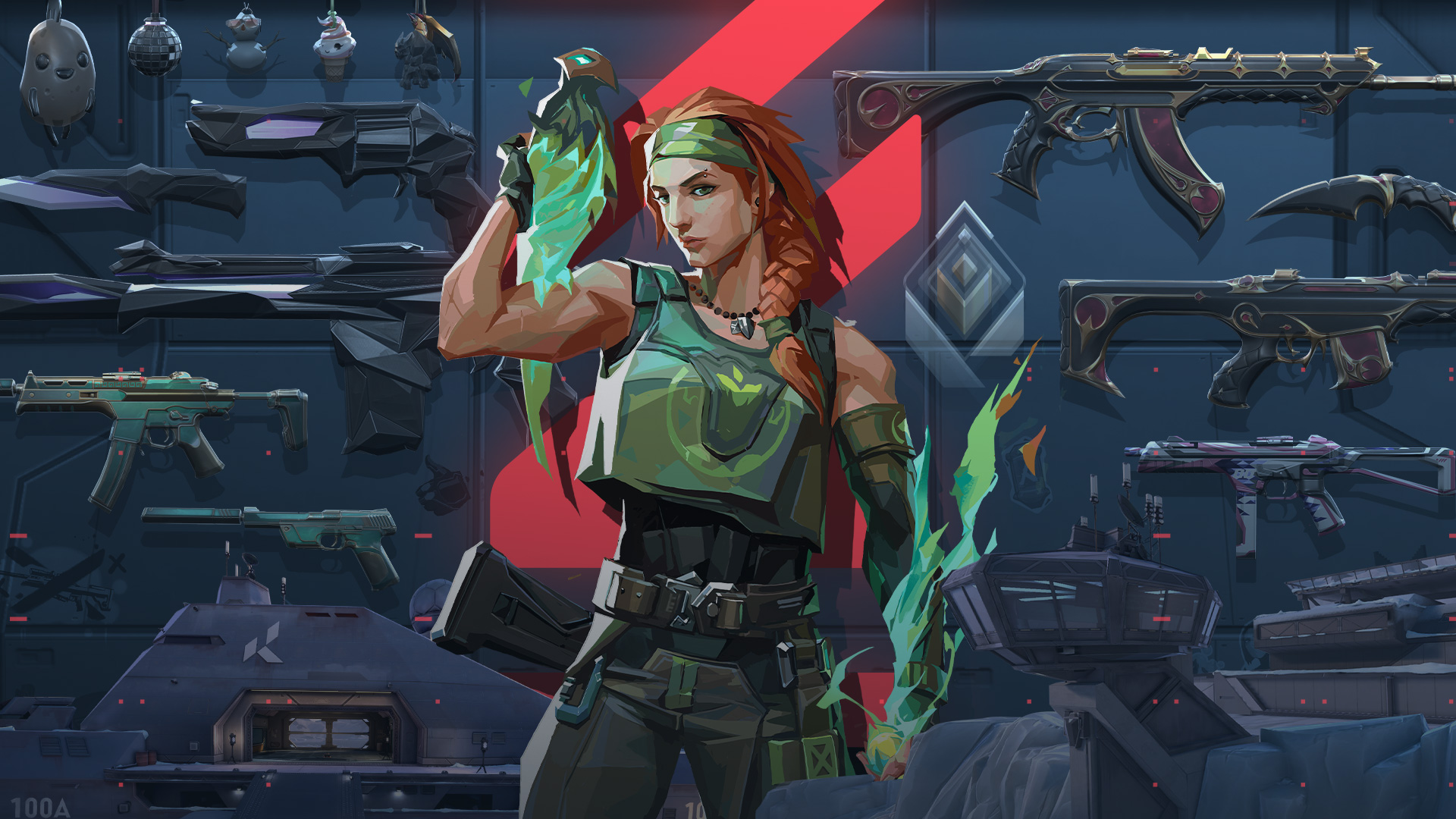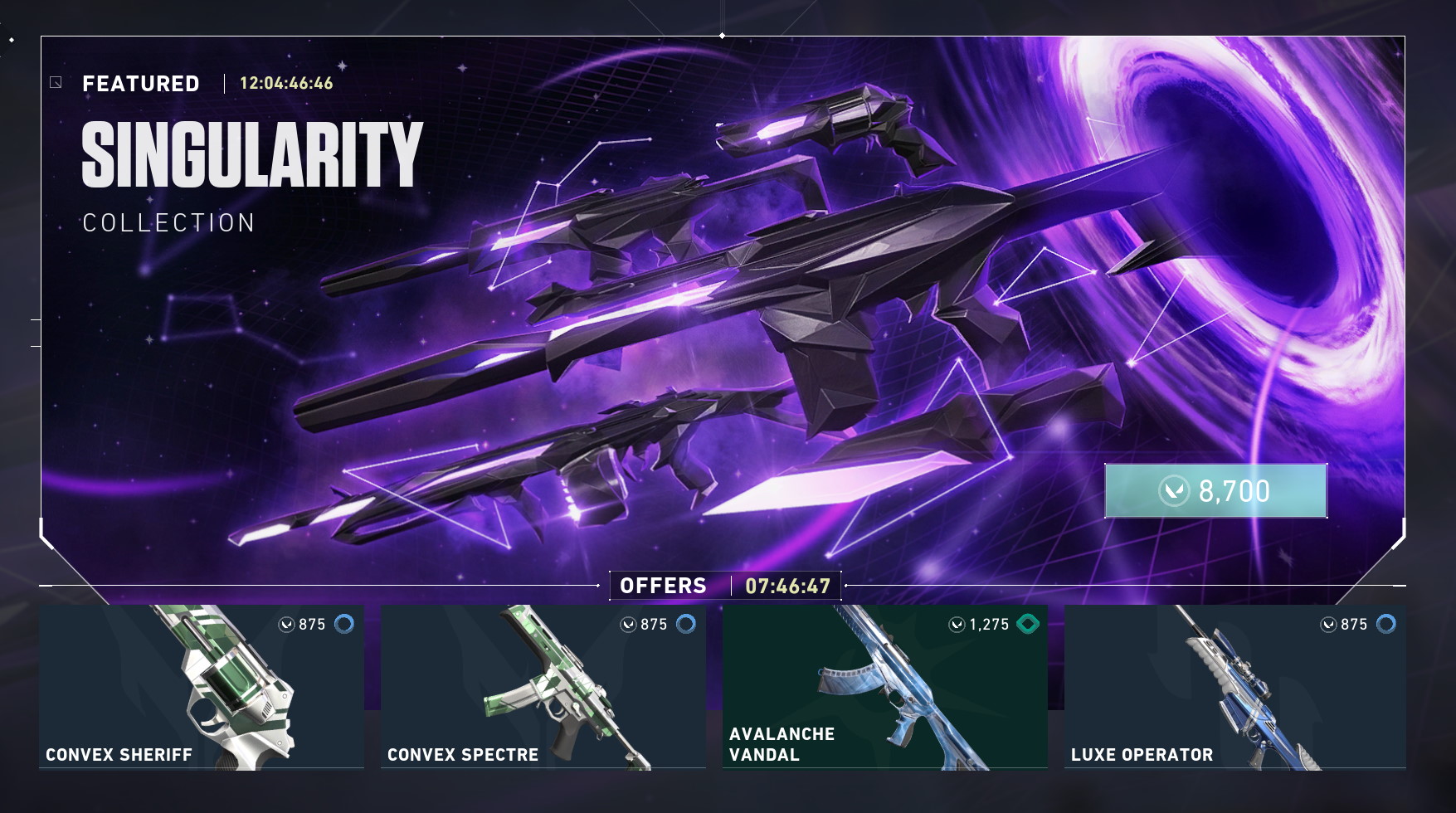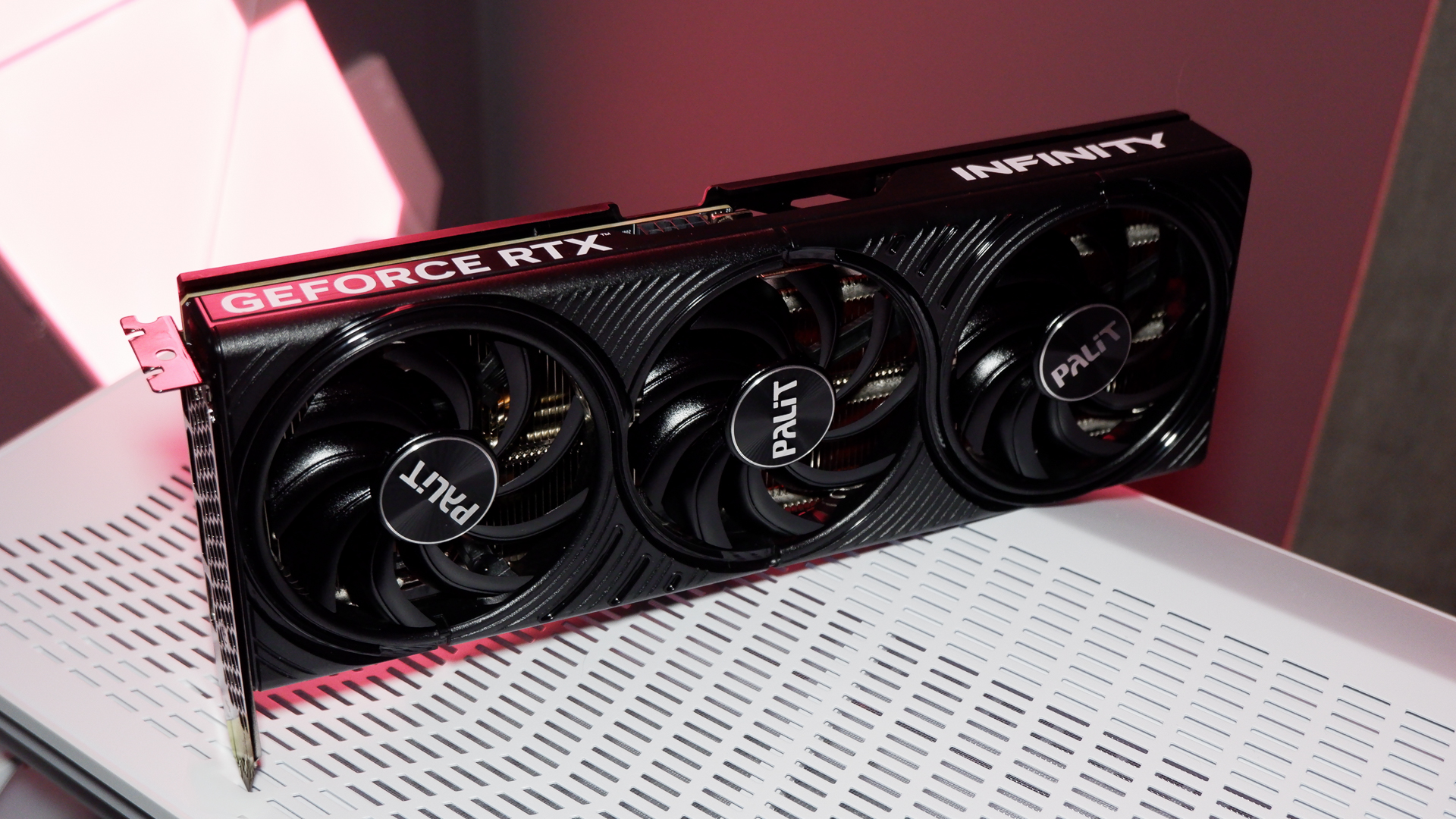Valorant skin pricing: 'The type of content that we make isn't meant to be cheap'
Valorant's skin prices are steep, but are they out of line? Riot says no.

Valorant skins are expensive. Take, for instance, the Elderflame set, released in July, which costs roughly $100 for the full collection of five, and then even more to level them up with additional eye candy and effects by spending a separate currency. The more recent Nebula collection is a little cheaper, but not much: It'll set you back $70 if you want the whole thing. That's more than the launch-day cost of a new game from a major studio.
In a recent interview, Riot told us that Valorant's weapon skins aren't cheap, but also said that they're not supposed to be.
We want there to feel like there's a level of effort and care put into skins, or any cosmetic content that people engage with, that makes it feel worthwhile. We don't want anything to feel throwaway."
Valorant producer Preeti Khanolkar
"We set a precedent in Valorant that the type of content that we make isn't meant to be 'cheap,' is the term we throw around," premium content art lead Sean Marino told me. "We don't want players to look at something and say, 'This feels cheap to me.' Part of what we take a look at for all our skins, and this is sort of a Riot-wide approach, is that we want there to feel like there's a level of effort and care put into skins, or any cosmetic content that people engage with, that makes it feel worthwhile. We don't want anything to feel throwaway."
"Whatever we choose to make, we're thinking about the end experience that a player is going to get using it," producer Preeti Khanolkar added. "Taking a static image of a galaxy and putting it on a gun is one way to do that, but the feeling of flying through space and that kind of freedom that comes with it, that fantasy, is really what we wanted to achieve with that [Nebula] skin."
The big price tag on skin bundles is an eye-grabber, but senior revenue strategy manager Joe Lee told me Riot's experience with League of Legends indicates that most Riot fans approach it on an a la carte basis, picking the individual pieces they want and leave the rest behind.. "When we release a thematic, let's say Star Guardian, which is one of our most popular thematics, that bundle is also in that range of $70-$100," he said. "But what ends up happening is that most people end up buying a couple of those skins, and then people that really like Star Guardian buy the whole bundle."
Big spenders in the free-to-play market are commonly referred to as "whales," and they represent a small but very lucrative portion of players—Gamasutra published an interesting article on the ethics of pursuing them all the way back in 2013. Riot acknowledged that full skin bundles have particular appeal to "high monetizers," but said that it isn't chasing that segment of the audience specifically: Its primary focus is on the Valorant battle pass, which offers a range of skins and other in-game items that can be unlocked through gameplay. Like battle passes in other games, all players have access to a free reward track, while a "premium" track is available for 1000 Valorant points—about $10.
Not everything is for everybody. When we develop it, we have to think about it that way, and as a player, you're not going to like every single execution either."
Preeti Khanolkar
"This should be our highest monetizing product—most number of players opting into this experience—because it's the best value for them," Marino said. "And on the content side, we're looking for a diverse thematic experience in the battle pass. You'll notice that there's three thematics in there that are very different. That's something that premium content tries really hard to do, so the battle pass is appealing to as many people as possible."
The biggest gaming news, reviews and hardware deals
Keep up to date with the most important stories and the best deals, as picked by the PC Gamer team.
By their nature, battle passes have to include a little bit of everything in order to maximize their appeal, and Khanolkar said Riot also wants to ensure that the content it offers is accessible with a reasonable amount of effort. She cited the example of the Dot Exe skin for the Vandal assault rifle that was offered at level 45 in the first Valorant battle pass, saying that after a large number of players missed out on it, Riot made the Hivemind Vandal skin in the second battle pass "a lot more achievable" by putting it at level 25.
"We want players to have a diverse array of skins," she said. "We think a lot about what goes into the battle pass, and we're only on the second one now. The third will be coming with the next act that comes out. [Valorant Act 3 actually launched on October 13.] For that, we really try hard to be like, what can we make in here for the player who's only engaging with the battle pass? But also, not everyone's going to get to the last chapter—can they fill out their arsenal?"
The Valorant store takes something of an opposite approach by offering a very limited number of skins for sale on a rotating basis. 'Feature' skin bundles are available to all players for two weeks, while 'Offers' are a randomized selection of four that are swapped out every few days. It struck me as odd when I first browsed the store that the vast majority of skins aren't available for purchase—'Take my money and give me the skin I want' seems like a fairly straightforward proposition—but Riot sees it as a way of enabling exclusivity and, as Lee put it, "'I was there' moments."
"Players that have been with us since launch, they've seen every Feature thematic, so things like Prime, Sovereign, Dragon, Elderflame," he said. "When they purchase it and then it goes away from the store, it's like, 'Oh, this person was with us from the very beginning, they were interested in that thematic, they bought it.' People down the road can still get it, but they have to get a little bit lucky for it to appear in their shop."
Keeping players happy and engaged is obviously a worthwhile goal, but Riot also has more practical concerns to deal with. Valorant is free to play—you can jump in and start blasting for as much and as long as you want, with no competitive disadvantage, without dropping a single penny—but it's not free to make and maintain. Loot boxes were the key to financial viability for free-to-play games for a long while, but EA went a little too far with Star Wars Battlefront in 2017, sparking a major backlash that led to regulatory moves against them in some nations and, inevitably, a drastic reduction in their use. Overwatch director Jeff Kaplan, for instance, has said that Blizzard is “exploring different options that move us away from loot boxes” with Overwatch 2, while EA’s latest Star Wars game, Squadrons, eschews loot boxes altogether.
Riot’s approach to monetizing Valorant also avoids randomized loot boxes, while at the same time maintaining an element of chance—instead of paying for it up front, your outcome is determined by the store reset. It's a slower process, because you can't just keep busting open crates until you get something you want, but it's also less predatory.
"We saw early on that players were sort of excited to go back and check their store every so often when it refreshed," Lee said. "You'd have the countdown that was there, and you'd have someone be, 'Oh, what's going to be in there this time?' and it's kind of a surprise moment.
"If everything was available [for purchase] all the time, someone might be like, 'Alright, I can go in there whenever and just buy what I want.' But [with this system] there's that action of like, 'Oh, I'm excited to go take a look.' That's' something we've seen a lot of good feedback on."

In the absence of loot boxes, which rely on variable drop rates to determine skin rarity, Valorant skin prices also establish a different, and in some ways more direct, hierarchy of value. Instead of luck, it's all about what you can (and are willing) to pay: Plenty of people might be happy to spend a dollar or two on a nice new skin, but far fewer are likely to feel the same about dropping $20 or more on one, or $100 for a set. It’s a tradeoff, and changes are always possible, especially as it's still early days for Valorant. But Lee emphasized that the one thing not on the table is a move to any kind of randomized drops or CS:GO-style external skin market.
"That's not a model we're comfortable doing in our game," he said. "We don't want you to put $2 in and keep on rolling for the chance to get something that's more than $2 that you can then sell on the store."
Twenty bucks for a gun skin still seems wild to me. I bought a monkey in Sea of Thieves for a quarter that much, and he dances and screams and I can shoot him out of a cannon when he gets on my nerves. But Riot seems happy with how it's working out so far, and for now the priority is to expand the range of skins that are available at all tiers.
"Not everything is for everybody. When we develop it, we have to think about it that way, and as a player, you're not going to like every single execution either," Khanolkar said. "And because we're early in our development, there's just not a ton of choices. We're trying our best to have a lot, but over time our catalog will expand, and a player will be able to identify tons of things, hopefully, that appeal to them."

Andy has been gaming on PCs from the very beginning, starting as a youngster with text adventures and primitive action games on a cassette-based TRS80. From there he graduated to the glory days of Sierra Online adventures and Microprose sims, ran a local BBS, learned how to build PCs, and developed a longstanding love of RPGs, immersive sims, and shooters. He began writing videogame news in 2007 for The Escapist and somehow managed to avoid getting fired until 2014, when he joined the storied ranks of PC Gamer. He covers all aspects of the industry, from new game announcements and patch notes to legal disputes, Twitch beefs, esports, and Henry Cavill. Lots of Henry Cavill.


